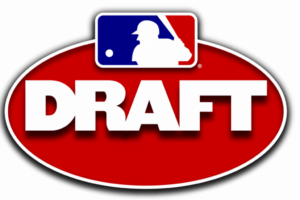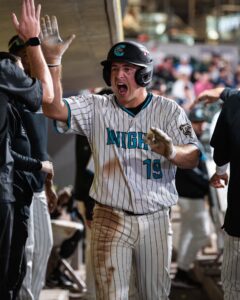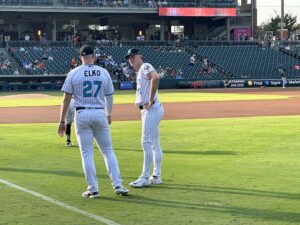Micah Johnson should be White Sox second baseman

Coming into spring training, the White Sox set up a nominally 5-way battle for the starting job at second base. The contenders: Carlos Sanchez, Micah Johnson, Gordon Beckham, Emilio Bonifacio and Tyler Saladino. The last two were outside shots, but any of the first three looked like they had a legitimate shot at it.
Sanchez, Beckham and Bonifacio are known commodities, or certainly close to it. Saladino not as much, but he was also probably the fifth-most likely to win the job. The real enigma was Johnson.
James Fegan of the ESPN White Sox-focused blog The Catbird Seat recently published an article making the case against giving the speedster the starting gig to open 2015. Fegan posited that unless he plays at his currently torrid pace the entire spring, the future needs to wait just a little longer, to allow for some further seasoning and development in AAA. It’s a well-reasoned piece you should read from a very good White Sox blogger, but I disagree with the conclusion. Here’s a different take…
What We Knew Coming In
Johnson has 70-grade or better speed, and he stole a minor league baseball-leading 84 bases in 2013. He also hit .312/.373/.451 across A, A+ and AA that year, though the numbers declined with each step up. This Indiana product likely will not be a big home run threat, but he’s been on an 8-10 HR/full season pace the past couple years so he can drive the ball here and there. He’s got a decent batter’s eye, with solid K/PA rates of 14.6% and 16.3% for 2013 and 2014 respectively, paired with decent walk rates of 8.3% and 7.8%. Defensively, reports were consistent in their inconsistency – spectacular plays and excellent range paired with hard hands and mental mistakes. The arm is probably a tick below average but certainly playable at second.
While the above profile looks like a good starting 2B prospect, what it artfully dances around is Micah’s 2014 season. AA was no problem, as the .880 OPS in 37 games before his promotion attest to. But then things went a little off the tracks. Johnson’s time in Charlotte was marred by hamstring injuries that while relatively minor, were problematic enough to keep him out of the lineup for quite a few games and had a negative effect on his play when he did. In 65 games, he posted a .275/.314/.370 line, which isn’t terrible but doesn’t exactly scream major league-ready. He stole 22 bases, and was caught 13 times. So part of the picture is, this is a player with only 65 games in AAA with mediocre results, and potential injury concerns.
Reading between the lines in articles posted during the offseason, it was clear the organization saw Johnson as the heir apparent for the job, either now or very soon. But he wasn’t guaranteed an Opening Day slot by any stretch, with the club being well aware of the risks and question marks. Which takes us to Camelback Ranch.
Spring Training Results
Statistically, he’s been on a torrid run. In 30 plate appearances over 11 games, Johnson’s got a .444/.500/.667 line including one of each kind of extra base hit and three walks, while striking out 6 times (20%). He’s stolen just one base, and been caught once. He’s made no errors. But this is where we drop the caveat emptor – these are spring training results and drawing conclusions from statistics in a couple weeks of Cactus League play is as prickly a proposition as skinning a Saguaro. As Fegan pointed out, Jared Mitchell has looked awfully good in spring training too.
So let’s go scouting style – how does this guy look? He’s very comfortable at the plate, and going with what the pitcher gives him, which has mostly resulted in spraying liners into left. He has hit a few balls hard to his pull side as well. There’s not a lot of leverage in his swing, but the hands show some quickness. That home run he hit? He opened the at-bat with a bunt attempt. On the basepaths he’s taken extra bases at every reasonable opportunity. And defense may be the most encouraging part of the picture: a few spectacular plays, no apparent mental mistakes, and a mixed bag of meh to good at turning double plays. So the eye test seems positive as well, in a very small sample size.
Stats can lie, and so can eyes. But in this case the parts are playing together like a young but talented orchestra, pleasing to the senses if imperfect in the first movement.
The Key Questions
What does spring training really tell us? Not a ton, and on this I somewhat agree with Fegan, but only in-so-far as stats are concerned. What I think does mean something is the approach Johnson has taken on both sides of the ball, and how he looked on field with mostly big leaguers. He passes the eye test for me, and the stats only happen to echo that sentiment.
How will Johnson’s defense play? Last year he made 13 errors in 88 games, which is about 24 in a full season, which is high for a second baseman. But just as spring training stats should be buried under an enormous pile of salt, error totals are a poor measure of defensive success at any level. Having seen his play live (we’ve got video of him from three different visits in his profile), and on my screen both from spring training and the affiliates, he plainly has far better range than many of his peers. That alone would likely more than counter-balance the 10-12 extra errors he may make. And that’s assuming he doesn’t improve his focus and hands, which I think he likely will given his youth, work ethic and tool set. There will be mistakes, and certainly Micah won’t be as slick turning two as Gordon Beckham, so it is a concern. But that range and work to improve provide some confidence he’ll be able to handle the position as at least an average player, with the chance for more.
Will he get on base enough to make the speed work? Let’s break this into parts. On the hitting side, he makes good contact (see the rates mentioned earlier), hit .312 in that big 2013 season, is a career .317 hitter at AA, and did manage .275 in AAA despite short play and injury. He won’t hit for a lot of power but again, he can and does drive the ball into the gaps and occasionally over the fence when the opportunity presents itself. On the Iso OBP side, the walk rates around 8% aren’t spectacular, but he’s been able to add 60-70 points to his OBP even when including the less-than-stellar Charlotte stint last year. In other words, if he can hit that same .275 now that he’s healthy, that’s a .335-.345 OBP which is plenty from your 9th place hitter (especially when his speed gives him extra bases). He could regress down from there in average, but he could also learn a little more patience and walk more.
Is he better than the competition? Comparing him to Carlos Sanchez, the glove and throwing work will likely not be as strong, but Johnson has more power, far more speed, and more range on defense. Against Beckham, similar comparisons to Sanchez apply defensively. Offensively, Beckham has more power, but the rest seems to lean to Johnson. Of course with Johnson this is based on projection, as opposed to the known commodity that is Gordon, so subjectivity reigns. But just as there are unknowns, there is room for growth too. So the answer here is… right now probably, and could be by a lot later.
Can he stay healthy? Johnson had two surgeries to address a nerve condition in his throwing arm, but the second and more significant procedure is supposedly a reliable and permanent fix. More important are the hamstring issues experienced last year. As was covered by seemingly the entire fleet of White Sox beat writers in the offseason, the man that would play second did a lot of focused conditioning work including hot yoga and myriad other methods. The issues didn’t come up before 2014, haven’t come up so far in this one, and the dedication to that topic should provide as much solace as can be expected for any speed-dependent player.
Conclusion
Nothing is ever “known” with a player who has yet to reach the majors. If anyone ever tells you about a can’t-miss prospect, feel free to laugh and laugh and laugh. Heck, one of the competitors in this battle was once considered a future face of the White Sox franchise, and how did that turn out?
To determine if a prospect is likely to outplay a known commodity, projection has to be done. Can spring training performance be part of the data set used for projection? If you look past the stats and see what is happening on the field, then yes, though it should be weighted lightly in your equation. Is the lack of advanced minor league play a concern? Absolutely. But the value of the speed, contact and hit tools, and even defensive potential that Micah Johnson brings to the table if he even gets within sight of his ceiling make him better than his cohorts. The fact that he’s also a confident and very sharp guy (we’ve interviewed him a few times) only increases the chances of him reaching those heights.
If he struggles for an extended period, send him back down – he’s got minor league options to burn and how the 2B plays for a month likely doesn’t make or break this team. The White Sox have other options, and all four of them will still be available during the season. This team was impressively rebuilt with an eye on winning in 2015 and beyond. Therefore the best option is to go with the player who gives you the best chance of average or better production from the position, and fall back to the replacement level warm body only if that fails. It’s Micah’s job to lose.
Want to know right away when we publish a new article? Type your email address in the box and click the “create subscription” button. Our list is completely spam free, and you can opt out at any time.






